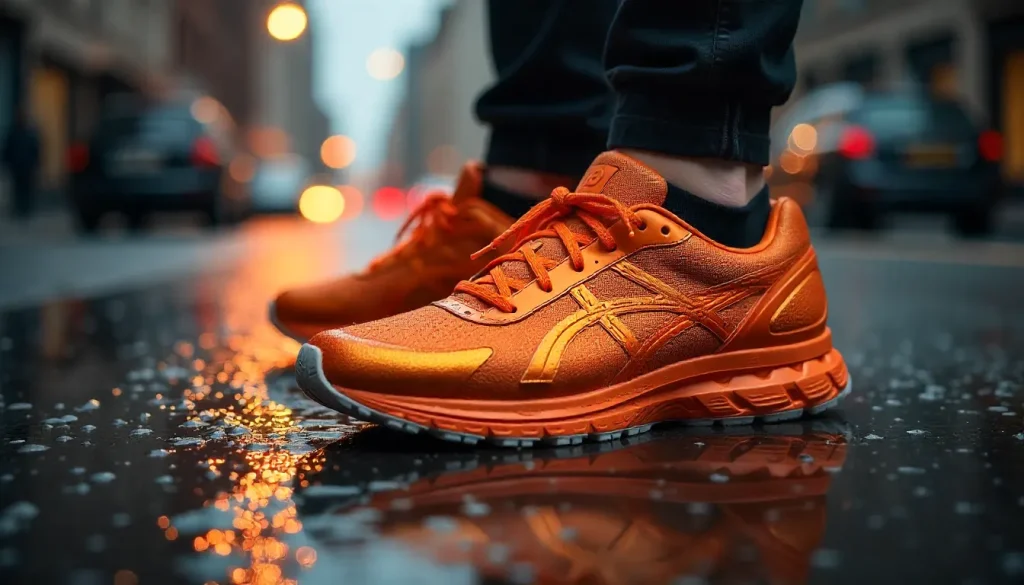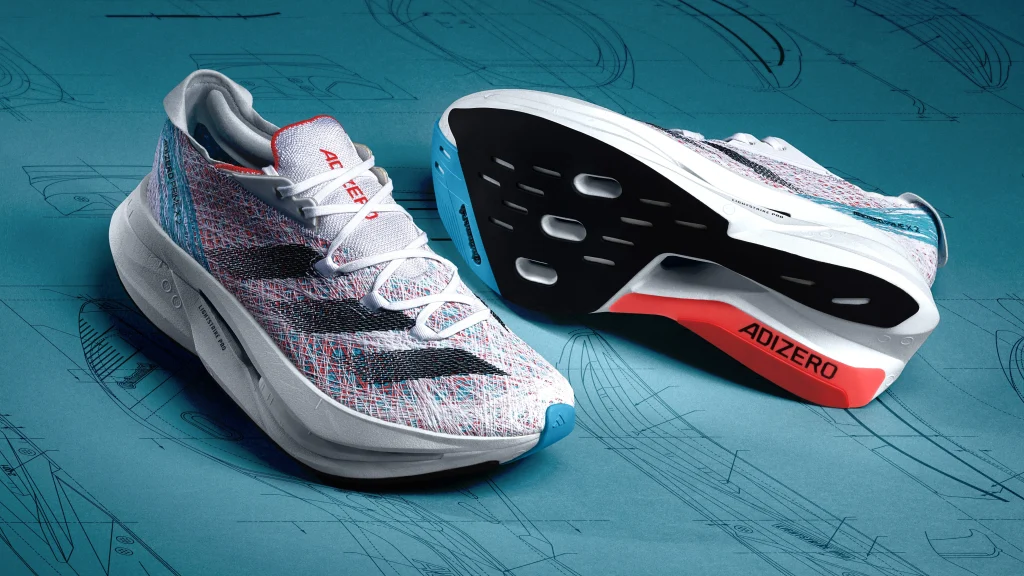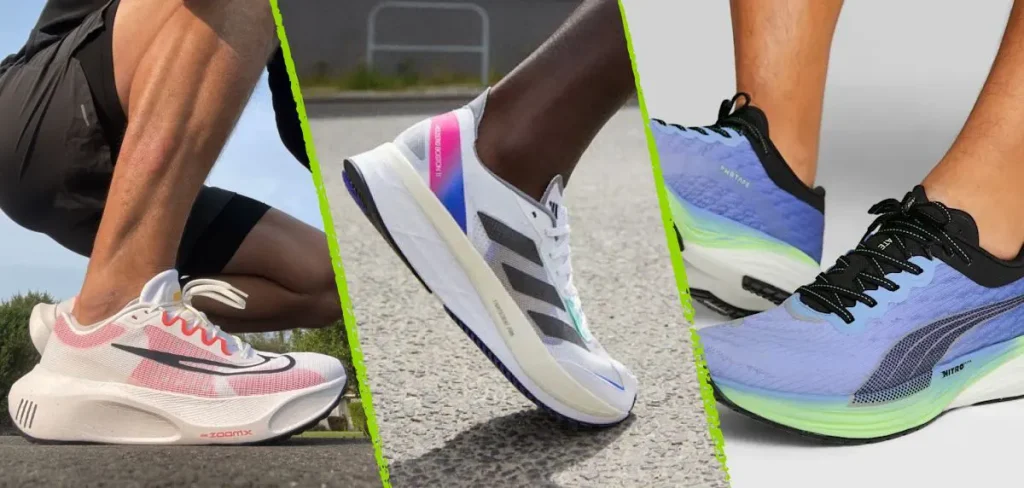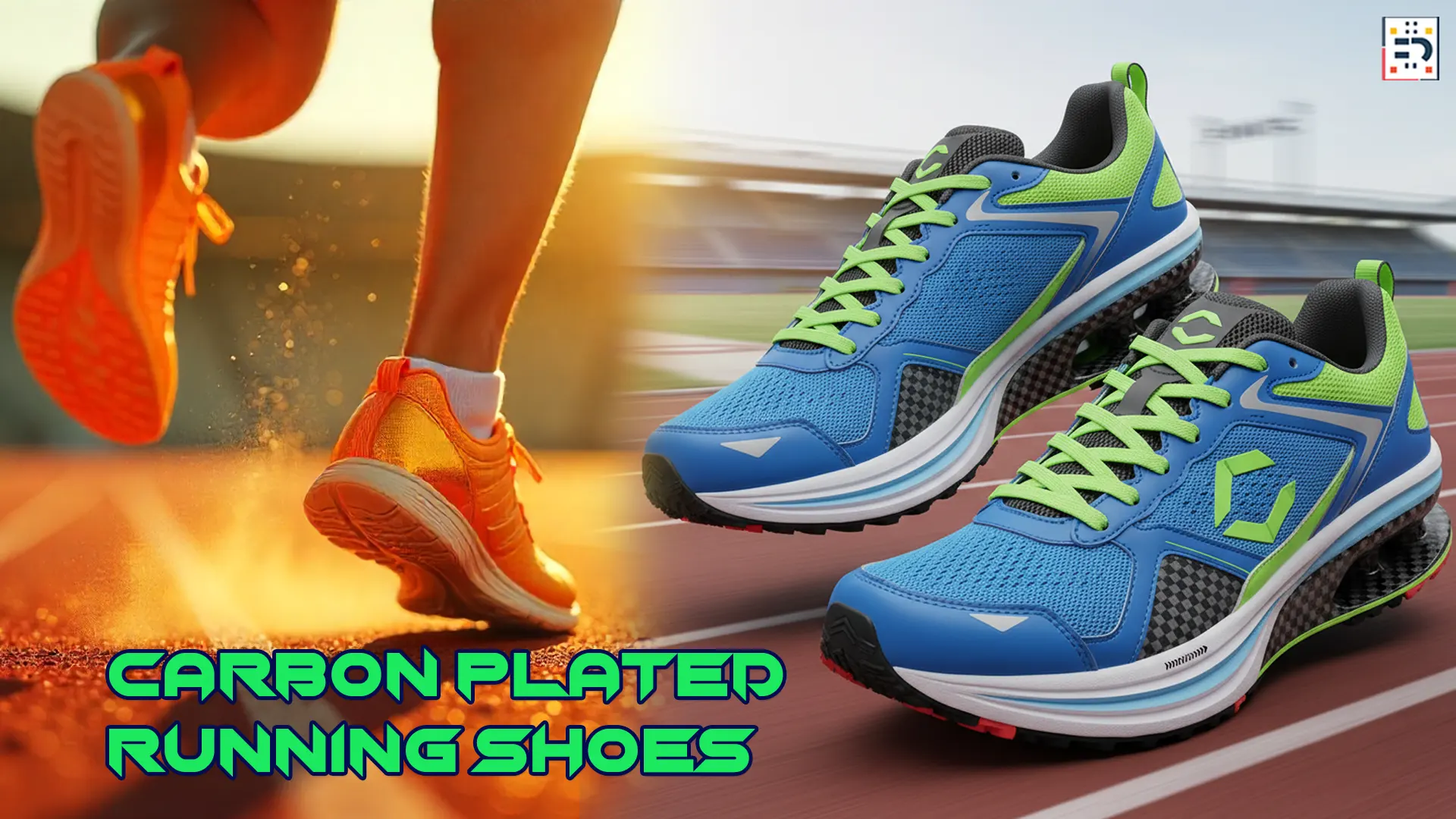Carbon plated running shoes have revolutionized the running world, breaking records and changing how we think about performance footwear. From the streets of Boston to the trails of Colorado, American runners are discovering the transformative power of carbon fiber technology in their training and racing shoes. These innovative super shoes have become the go-to choice for elite athletes and recreational runners seeking marathon performance enhancement and running economy improvement.
What Are Carbon Plated Running Shoes?
Carbon fiber running shoes feature a thin, lightweight carbon fiber plate embedded in the midsole. This rigid plate works in conjunction with responsive foam to create a propulsive effect that can improve running efficiency and reduce energy expenditure. The technology essentially acts as a lever, helping to propel runners forward with each stride while providing marathon shoe benefits.
The concept gained mainstream attention when Nike introduced the Vaporfly series, which was worn by Eliud Kipchoge when he broke the marathon world record. Since then, virtually every major running shoe manufacturer has developed their own carbon plate technology models. These performance running shoes are also commonly referred to as “super shoes” in the running community.
The Science Behind the Speed
Biomechanical Benefits
Carbon plates offer several running performance benefits that have been validated by scientific research:
Energy Return: The rigid plate stores and releases energy during the gait cycle, particularly during the toe-off phase. Studies have shown this can improve running economy by 2-4%, which translates to significant time savings over marathon distances.
Improved Propulsion: The plate creates a lever effect that helps propel runners forward more efficiently. This is especially beneficial during the transition from midfoot to forefoot strike, making these ideal tempo run shoes.
Reduced Muscle Fatigue: By improving mechanical efficiency, carbon fiber plates can help reduce fatigue in the calf muscles and Achilles tendon during long runs.
Enhanced Stability: The rigid structure provides a stable platform that can help maintain proper foot mechanics, particularly during faster paces.
Foam Technology Partnership
Carbon plates work best when paired with high-performance running foam. Most manufacturers use lightweight, responsive foams like Nike’s ZoomX, Adidas’ Lightstrike Pro, or Hoka’s PEBA-based compounds. These responsive foam technologies compress and rebound quickly, working synergistically with the carbon plate to maximize energy return and create the ultimate fast running shoes.

Best Carbon Plated Running Shoes Available in the US Market
Racing Shoes
Nike Vaporfly Next% Series: The gold standard for marathon racing shoes, worn by countless American elite athletes and recreational runners. Known for exceptional energy return and lightweight construction. These are considered among the best carbon running shoes for race day.
Adidas Adizero Adios Pro: Features Lightstrike Pro foam and a carbon plate system designed for marathon racing. Popular among runners seeking an alternative to Nike’s offerings in the carbon fiber running shoes category.
Saucony Endorphin Pro: Offers a more accessible entry point into carbon technology with excellent durability and a comfortable fit for American foot shapes. Excellent marathon shoes for sub-elite runners.
Hoka Carbon X: Designed for ultra-distance racing, popular among American ultramarathoners and trail runners who venture onto roads. These performance running shoes excel in longer distances.
Training Shoes
Nike Vaporfly Next% 2: While primarily a racing shoe, many recreational runners use these for key workouts and long runs.
Saucony Endorphin Speed: A versatile carbon training shoe that bridges the gap between training and racing, popular for tempo runs and workouts. Considered one of the best daily trainer carbon shoes.
New Balance FuelCell RC Elite: Offers carbon technology in a more durable package suitable for high-mileage training and everyday runs.
Carbon Plate Running Shoes Benefits for American Runners
Performance Gains
For competitive American runners, carbon plated running shoes can provide measurable marathon time improvements. Marathon runners often report time savings of 2-6 minutes over 26.2 miles, while 5K and 10K runners may see improvements of 15-45 seconds. These fast marathon shoes have helped numerous American runners achieve Boston Marathon qualifying times.
Injury Prevention Potential
While research is ongoing, some studies suggest that the improved running economy provided by carbon plates may reduce overall stress on the body during long runs. This could potentially help prevent overuse injuries common among American runners training for events like the Boston Marathon or local half-marathons. The energy return technology may reduce muscle fatigue and lower injury risk.
Training Versatility
Modern carbon plated training shoes aren’t just for racing. Many American runners incorporate them into their training rotation for tempo runs, long runs, and key workouts, helping them adapt to race-day footwear while potentially improving training quality. These versatile running shoes work well for speed work and marathon training.

Carbon Running Shoes Considerations and Limitations
Cost Factor
Carbon plated running shoes typically cost $200-$300, significantly more than traditional running shoes. For budget-conscious American runners, this represents a substantial investment that may not be justified unless racing performance is a priority. However, the performance benefits often justify the premium running shoes cost for serious runners.
Durability Concerns
The lightweight construction and soft foams used in carbon running shoes often result in shorter lifespans compared to traditional trainers. Most carbon plate shoes last 200-400 miles, requiring more frequent replacement. This impacts the cost per mile for these high-performance running shoes.
Adaptation Period
Runners need time to adapt to the different feel and mechanics of carbon fiber running shoes. The rigid plate can initially feel uncomfortable, and some runners experience calf soreness during the transition period. It’s recommended to gradually introduce these performance shoes into your training routine.
Not Universal Solutions
Carbon plate technology doesn’t benefit every runner equally. Factors like running form, pace, and individual biomechanics influence how much advantage a runner will gain. Some runners may find minimal or no improvement from these super shoes. Runner’s World has published extensive research on individual variability in carbon shoe benefits.
How to Choose the Right Carbon Running Shoes
For Racing
Consider your target race distance and typical paces. Marathon racing shoes should prioritize maximum energy return and lightweight construction, while 5K racing shoes might prefer shoes with more responsive feel and better ground contact. Check reviews on Fleet Feet for specific model recommendations.
For Training
Look for carbon training shoes with more durable construction and comfortable fit for higher mileage. Consider how they’ll integrate with your existing shoe rotation. The best daily trainer carbon shoes balance performance with longevity.
Fit Considerations
Carbon running shoes often fit differently than traditional running shoes due to their construction. Many American runners find they need to size up by half a size, and the rigid plate can affect toe box comfort during long runs. Visit a specialty running store for proper fitting, or check Road Runner Sports for fitting guides.
The Future of Carbon Plate Running Technology
The carbon plate revolution is still evolving. Manufacturers are experimenting with different plate geometries, foam formulations, and construction methods. Expect to see continued innovation in areas like:
- Multi-plate systems for enhanced energy return
- Customizable stiffness based on runner preferences
- Improved durability without sacrificing performance
- Lower price points as technology matures
Research from institutions like University of Colorado Boulder continues to advance our understanding of carbon plate biomechanics.
Regional Considerations for American Runners
Climate Adaptability
Carbon running shoes perform well across the diverse American climate zones, from the heat of Arizona to the cold of Minnesota winters. However, the lightweight construction may offer less protection in extreme conditions. Check Weather.gov for local running conditions.
Terrain Suitability
While designed primarily for road running, carbon plate shoes work well on the varied terrain American runners encounter, from flat Midwest courses to hilly East Coast routes. Some models are specifically designed for trail running applications, offering carbon technology for off-road performance.
Race Regulations
Major American racing organizations, including USA Track & Field and Boston Athletic Association, have specific regulations regarding shoe technology. Current carbon plate running shoes are legal for most competitions, but runners should verify rules for their specific events.

Making the Carbon Running Shoes Investment Decision
Before investing in carbon plated running shoes, American runners should consider:
Performance Goals: Are you training for a specific time goal or PR attempt? These fast running shoes work best for goal-oriented runners.
Training Volume: Higher mileage runners may need multiple pairs to manage durability concerns and maintain their shoe rotation.
Budget: Factor in the higher cost and more frequent replacement needs of these premium running shoes.
Current Performance Level: Faster runners typically see greater benefits from carbon plate technology. Research from Running USA shows optimal benefits for sub-3:30 marathoners.
Are Carbon Plated Running Shoes Worth It?
Carbon plated running shoes represent a legitimate technological advancement that can provide measurable performance benefits for many American runners. While they’re not magic bullets that instantly make every runner faster, they offer real advantages for those willing to invest in the technology and adapt their training accordingly.
Whether you’re chasing a Boston Marathon qualifier, aiming for a local 5K PR, or simply curious about the latest running shoe technology, carbon fiber running shoes deserve consideration as part of a comprehensive approach to running performance. As with any significant gear change, the key is understanding your individual needs, goals, and expectations.
The carbon plate revolution has democratized access to performance technology that was once reserved for elite athletes. For American runners ready to explore their potential, these super shoes offer an exciting opportunity to experience the future of running footwear. Research your options thoroughly, try before you buy when possible, and remember that consistent training remains the most important factor in running performance.
#CarbonPlatedRunningShoes #SuperShoes #MarathonShoes #RunningShoes2025 #CarbonFiberShoes #PerformanceRunning #RunningGear #MarathonTraining


